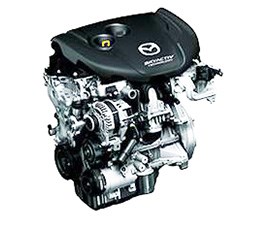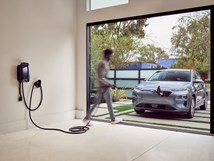Toyota to Use Mazda HCCI Engine?
Mazda Motor Corp. will supply a version of its SkyActiv-X engine, which combines attributes of gasoline and diesel units, to Toyota Motor Corp., BestCar reports.
Mazda Motor Corp. will supply a version of its SkyActiv-X engine, which combines attributes of gasoline and diesel units, to Toyota Motor Corp., BestCar reports.

Toyota will use the fuel-efficient homogenous-charge-compression-ignition (HCCI) technology in an unnamed fastback sedan and the next-generation Lexus IS sedan and RC coupe, according to the Japanese enthusiast magazine. The Toyota applications and future Mazda vehicles are expected to use an inline 6-cylinder version of the engine mated with a 48-volt mild-hybrid system—and possibly a supercharger—to further boost efficiency.
The initial SkyActiv-X is a 2.0-liter 4-cylinder mill (above) that debuted this year in several Mazda models in Europe. HCCI allows the engine to function like a diesel to ignite the air-fuel mixture through pressure rather than a sparkplug.
Mazda and Toyota have collaborated since 2010 on powertrains, when Toyota began supplying a variant of its Prius hybrid powertrain to the smaller company. In 2017, the two carmakers acquired small stakes of each other’s stock as part of manufacturing joint venture that’s due to ramp up in Alabama in 2021.
Toyota already sources some of its engines from BMW and Subaru. BMW supplies the 6-cylinder unit used in Toyota’s new Supra sports car. A Subaru-built “boxer”-4 engine powers the Japanese company’s GT86 coupe.
RELATED CONTENT
-
Multiple Choices for Light, High-Performance Chassis
How carbon fiber is utilized is as different as the vehicles on which it is used. From full carbon tubs to partial panels to welded steel tube sandwich structures, the only limitation is imagination.
-
On Fuel Cells, Battery Enclosures, and Lucid Air
A skateboard for fuel cells, building a better battery enclosure, what ADAS does, a big engine for boats, the curious case of lean production, what drivers think, and why Lucid is remarkable
-
On Automotive: An All Electric Edition
A look at electric vehicle-related developments, from new products to recycling old batteries.








